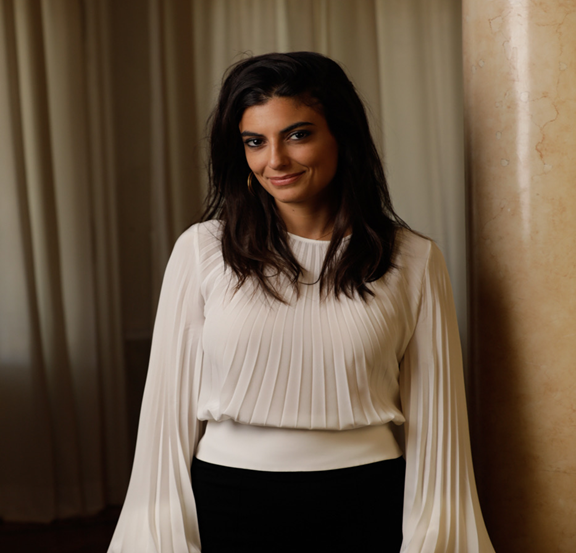Art in Lebanon Reels From Unprecedented Economic Crisis

Katya Traboulsi working on her Perpetual Identities series in her atelier. Courtesy of Katya Traboulsi. 2018.
In the wounded city of Beirut, where dusty debris are piled up with shattered hopes and dreams, multimedia artist Katya Traboulsi reels from the devastating effects of Lebanon’s economic crisis on her life. “It has become very difficult and expensive for me to have the freedom of expressing my art through different mediums,” says the 61-year-old artist, from her atelier in Beirut. Best known for her hand-crafted replicas of Lebanese war bomb shells adorned with colorful ornaments, she had to put her new project on hold because of its cost, waiting for better days that don’t seem to be near. Amid a deep economic crisis, the future of the art scene in Lebanon remains uncertain.
Since 2019, Lebanon has been going through a series of crises, leaving the population with a projected increase in poverty to 45% and in extreme poverty to 22%, according to the World Bank. The local currency has gone through an unprecedented devaluation amid a scarcity of the US dollars on the local market. The purchasing power of the Lebanese has gone to an all-time low, with the Lebanese pound selling at around 13,000 to the dollar, compared with 1,500 pounds in 2018. The “thawra” anti-corruption protest movement, the COVID-19 pandemic and the explosion at the Beirut port on 4th of August added to the people’s suffering from the political divisions and the financial meltdown.
The economic crisis is making art less essential and unaffordable for many, in a country known for its thriving art scene. Artists and gallerists who once were the soul of the “thawra,” are now looking for ways to survive financially. “The Lebanese artist, who used to be paid in Lebanese pounds and who used to live well, has lost almost 90% percent of the value of their money,” said Laure d’Hauteville, director and founder of the Beirut Art Fair, which has not taken place since 2019. Indeed, the sale of artworks at local galleries has become complicated. It’s only been saved by some art collectors, who have continued to buy artworks using bank accounts abroad. Banks have been imposing limits on withdrawals and transactions in the country.
For Marianne Chalabi, director at the Mark Hachem gallery, the devaluation of the local currency was the main problem. “What has become complicated in selling artworks is that people want to pay in checks because it is complicated for them to take out money from the bank, so they don’t want to pay in cash.” While younger artists would rather accept checks even if this means losing half of the value of their artwork, more established artists prefer to be paid in cash.

Like many other Lebanese, some artists are looking to leave the country in search of a better life abroad. Tattoo artist Jean-Georges Prince moved to Dubai last March when he got an opportunity in advertising, his former job. it had been very difficult to sustain himself financially in Beirut as a tattoo artist. “As an artist, you will take the first opportunity you have to actually go and do what you love in an environment that allows you to do it better. (…) Talented people from Lebanon are going to be poached. They’re going to find opportunities elsewhere and they’re going to take it,” said Prince. “I literally don’t know anybody who’s been in any kind of art field who hasn’t fled already.”
Some artists however are determined to stay in Lebanon.
Katya Traboulsi is one of them. She’s already been through many wars, including the devastating Israeli invasion of the country in 1982. She remains optimistic and believes that Lebanon and its art scene will rise again. “We are only trying to survive financially. Art will never die, meanwhile, it’s on a respirator.”


